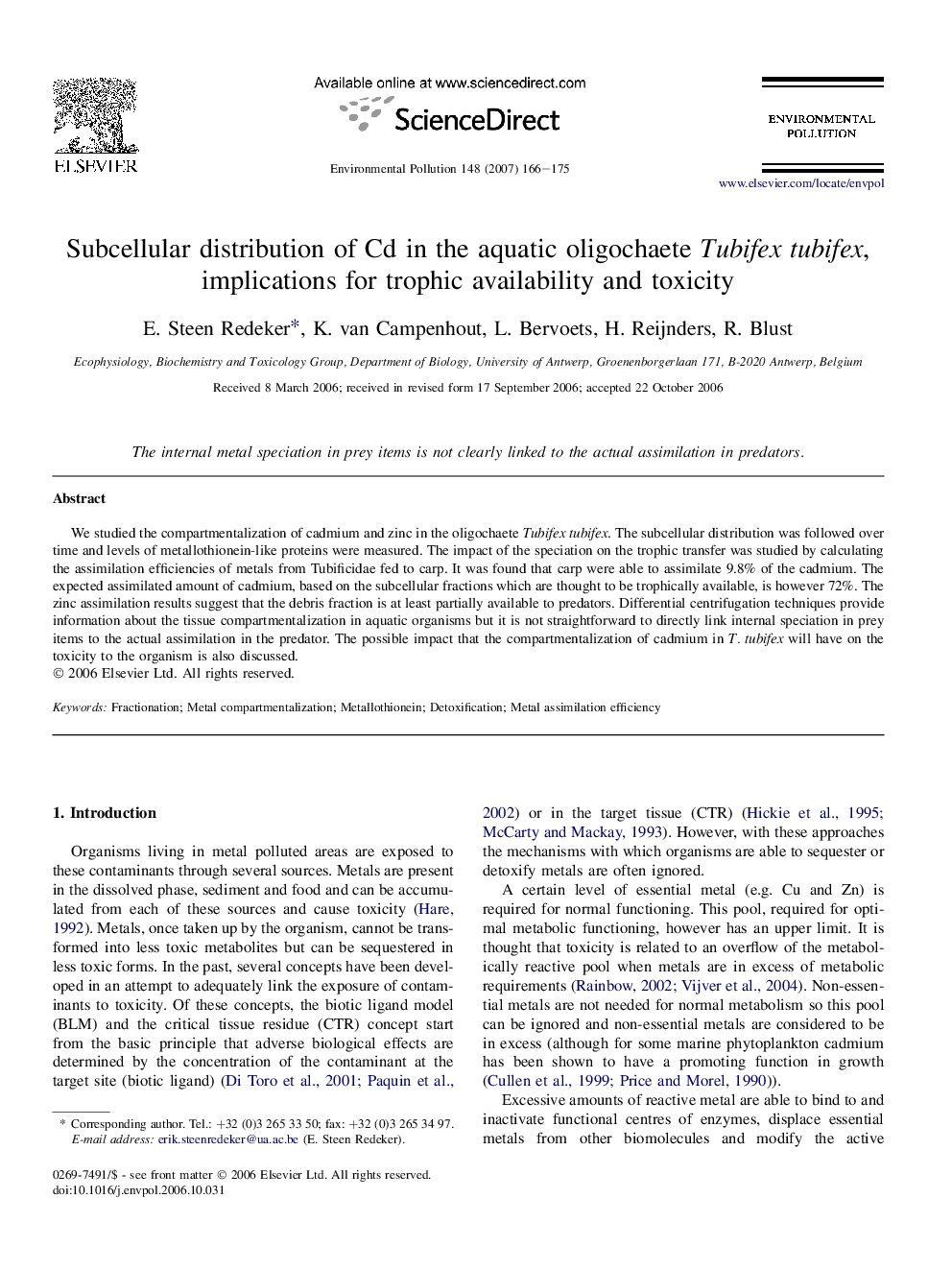| Article ID | Journal | Published Year | Pages | File Type |
|---|---|---|---|---|
| 4427573 | Environmental Pollution | 2007 | 10 Pages |
We studied the compartmentalization of cadmium and zinc in the oligochaete Tubifex tubifex. The subcellular distribution was followed over time and levels of metallothionein-like proteins were measured. The impact of the speciation on the trophic transfer was studied by calculating the assimilation efficiencies of metals from Tubificidae fed to carp. It was found that carp were able to assimilate 9.8% of the cadmium. The expected assimilated amount of cadmium, based on the subcellular fractions which are thought to be trophically available, is however 72%. The zinc assimilation results suggest that the debris fraction is at least partially available to predators. Differential centrifugation techniques provide information about the tissue compartmentalization in aquatic organisms but it is not straightforward to directly link internal speciation in prey items to the actual assimilation in the predator. The possible impact that the compartmentalization of cadmium in T. tubifex will have on the toxicity to the organism is also discussed.
